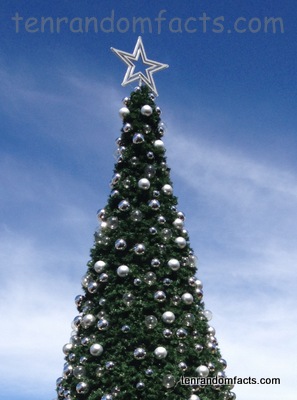“Oh Christmas tree, Oh Christmas tree!”
- Traditionally, the Christmas tree symbolises the Christian belief of eternal life and was also thought to have been used in pre-Christian winter rites.
- The original Christmas tree can be traced down to 15th-16th century, in early modern Germany and the first decorated trees were used in the years 1441, 1442, 1510, 1514, in the historic region of Livonia.
- The Christmas tree is traditionally an evergreen tree which is normally pine or fir and were originally decorated with edible food. The artificial Christmas tree was invented in Germany in the early 18th century and are now made in numerous shapes and sizes, using many different materials.
- In the 18th century, candles were used to decorate Christmas trees which then led to electric lights being used.
- In the 19th century, the Christmas tree tradition spread to many countries. The first Christmas tree introduced in North America was in 1781 when Brunswick soldiers had a Christmas party.
- By the early 19th century, royalty started to take on the tradition of Christmas trees and since the 19th-20th century, Christmas trees have been used in churches. In the early 20th century, Christmas trees were being displayed in public at parks and streets.
- In Russia the Christmas tree was banned not long after the October Resolution but the tree was introduced again, as the New Year fir tree, in 1935.
- The traditional Christmas tree decorations are tinsel, baubles, Christmas lights, angel or star topper and sometimes homemade decorations, and public trees are often decorated with items and foods that wildlife like.
- Approximately 33-36 million Christmas trees are produced per year in America and England produces 50-60 million per year. By 1998, there were about 15,000 American growers of evergreen Christmas trees.
- Between 2001-2007, Christmas tree sales in the United States went from 7.3 million sales up to a huge 17.4 million sales.





